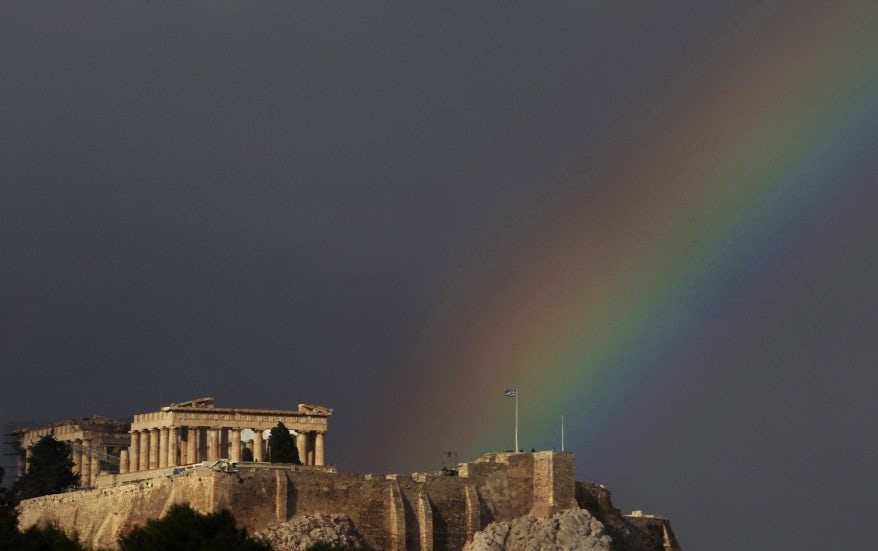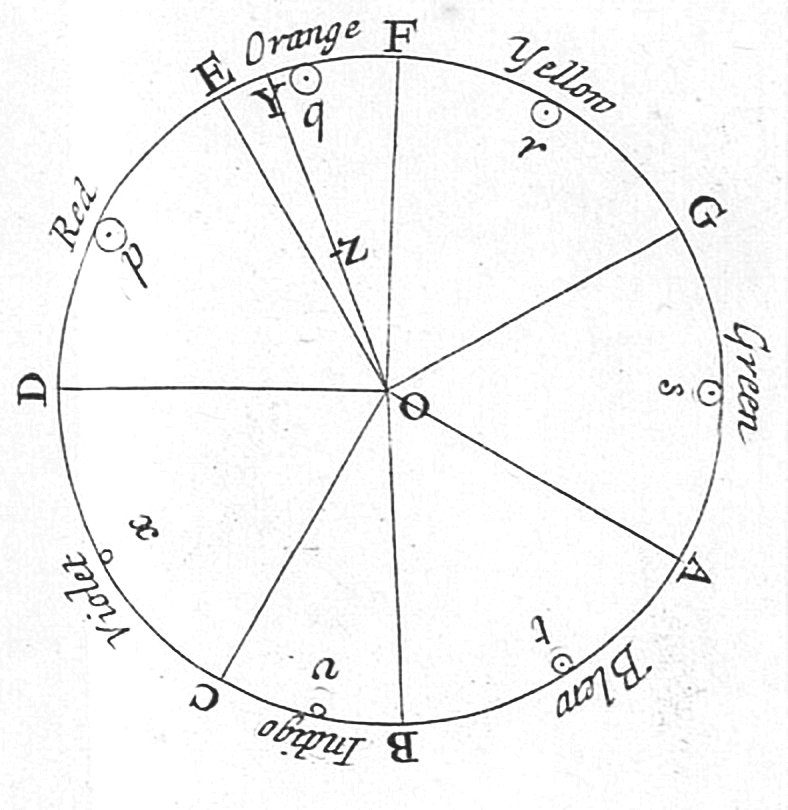I Come in Many Different Colors Like Red Blue and Green Plus All the Colors in
There are seven colors in the rainbow: red, orange, yellow, green, blue, indigo and violet. The acronym "ROY G. BIV" is a handy reminder for the color sequence that makes up the rainbow.

But elementary school finger painting teaches us that there are three primary colors—red, yellow and blue—that combine to make three secondary colors—orange, green and purple—and (plus or minus some black and white paint) every other color imaginable. That's six basic colors.
So in the rainbow, purple is subdivided into purple and more-blue-ish-purple. Who the bananas made that decision?!? And why?
The short answers: Isaac Newton. And Ancient Greek philosophy. Um, what?
The visual spectrum
—
Color theory is a bit more complicated than stirring together the right finger paints. We mix pigments using the well-understood but confusingly-named subtractive method1, which uses red, blue and yellow as primary colors2. However wesee colors in light waves. And light combines colors according to the the additive mixing method, which uses red, blue and green as primary colors3.
So where does Sir Isaac come into this? In the 17th century, he was the one who realized that, when we break white light apart using a prism (or rain drops), we get the visual spectrum of colored light (otherwise known as the rainbow).

As you can see, in the visual spectrum, each color bleeds into its neighbors. It's not a distinct set of colors but rather, well, a spectrum4. But Newton decided we should probably break this spectrum up into chunks, so we could more easily talk about it. But how many divisions should there be…?
Ancient Greece and the magic of 7
—

Seven is lucky. Or so those of us in Western Cultures have always been told. But why? We can trace the roots of this association back to the 6th century BC and a dude named Pythagoras5. Now, Pythagoras loved numbers. And he loved applying numbers to real-world phenomena. He's credited with discovering the fact that musical notes (of which there are seven) could be translated into mathematical equations, and he had a theory about how the heavenly bodies (seven of which where known about at the time) moved according to mathematical patterns.
Noticing a pattern? Pythagoras did: his observations showed that 7 was a magical number that somehow connected disparate phenomena. He further saw it as the sum of the spiritual (3) and the material (4).
Pythagoras also started a school, and the ideas he espoused grew into a philosophy called Pythagoreanism, based on mathematics and mysticism. Pythagoreanism influenced some of the most well-known classical thinkers, including Aristotle and Plato.
And thus we now have seven days of the week, seven liberal arts subjects, seven deadly sins, seven wonders of the world and seven dwarves.
So how did it get applied to the rainbow?
The circular route from Pythagaros to Newton
—

The Pythagorean philosopher Philoalaus is the first known person to posit that the earth resolved around a "central fire" (rather than everything revolving around the earth). This theory was in turn used by Copernicus, who is widely credited with developing the heliocentric theory of planetary motion. And Newton relied on Copernicus' work when developing his own theory of gravity.
So TL;DR Newton thought the Pythagoreans were pretty great.
When he started his work with color, he originally only subdivided the spectrum into five colors (red, yellow, green, blue and purple), but revised the number to seven, adding orange and indigo, because Pythagoras believed that there was a connection between color and music. And there are seven natural notes, so there should also be seven principal colors.
Math, music, numerology and a couple of dead guys. That, kids, is why there are seven colors in the rainbow.
How many colors do you think should be in the rainbow? 6, 7 or other? Let us know in the comments!"
1. It's called subtractive because you're "subtracting" light as you add color. The more color you add, the darker you get. When you mix all three colors you hypothetically get black, which is all light subtracted. Totally intuitive, right? </sarcasm>↩
2. To make things even more confusing, when you're talking about printing—which uses subtractive color mixing—you call the primary colors CMYK: cyan (a shade of blue), magenta (which is kind of red-ish, I guess?), yellow (okay, one of them is easy) and black (which is called k because the "k"ey plate in a printer is filled with black ink).↩
3. Additive because you're adding light. And if you mix all of the colors (or wavelengths) of light, they add up to white. ↩
4. If you want to know more, Wikipedia has a pretty sweet table of important spectral colors and their wavelengths.↩
5. Yup, the same guy who came up with the a2+b2=c2 right triangle theorem.↩
flemmingjoincte71.blogspot.com
Source: https://99designs.com/blog/tips/why-are-there-7-colors-rainbow/
0 Response to "I Come in Many Different Colors Like Red Blue and Green Plus All the Colors in"
Post a Comment